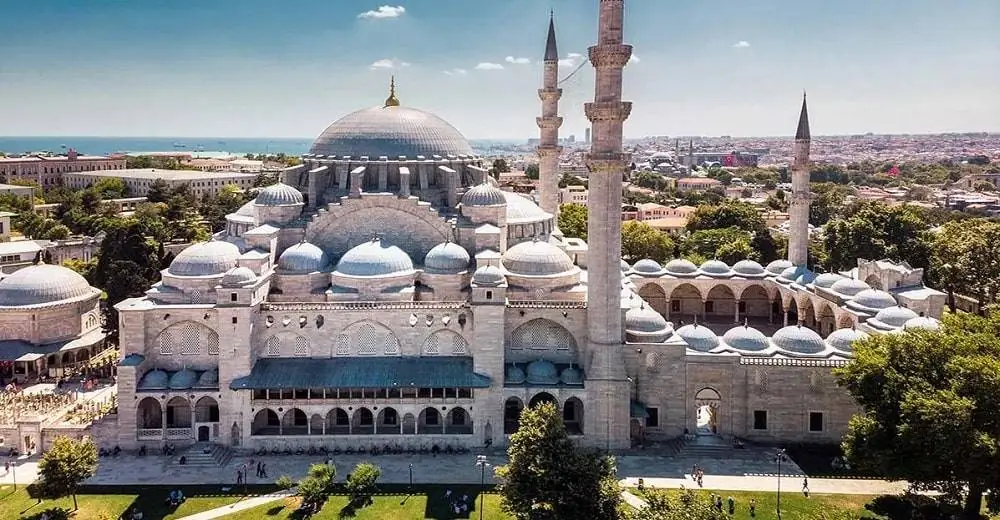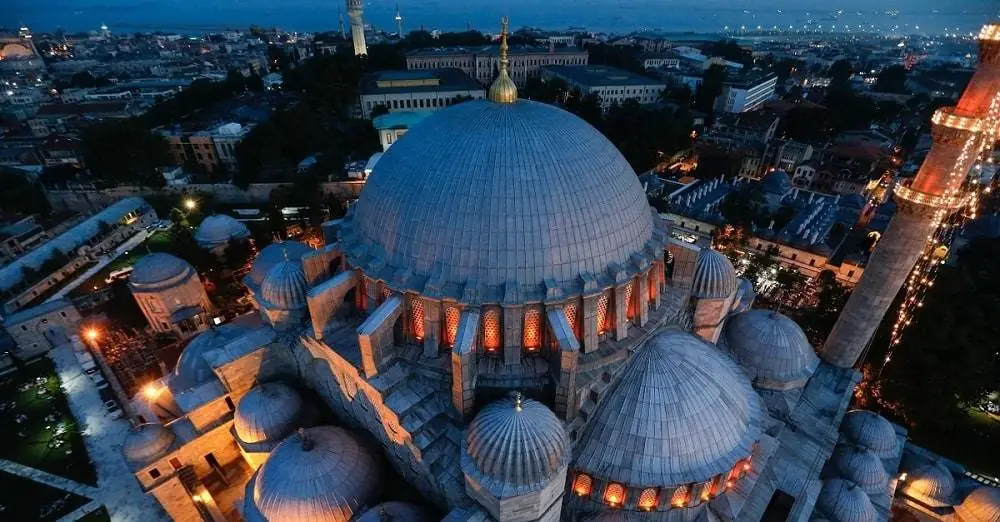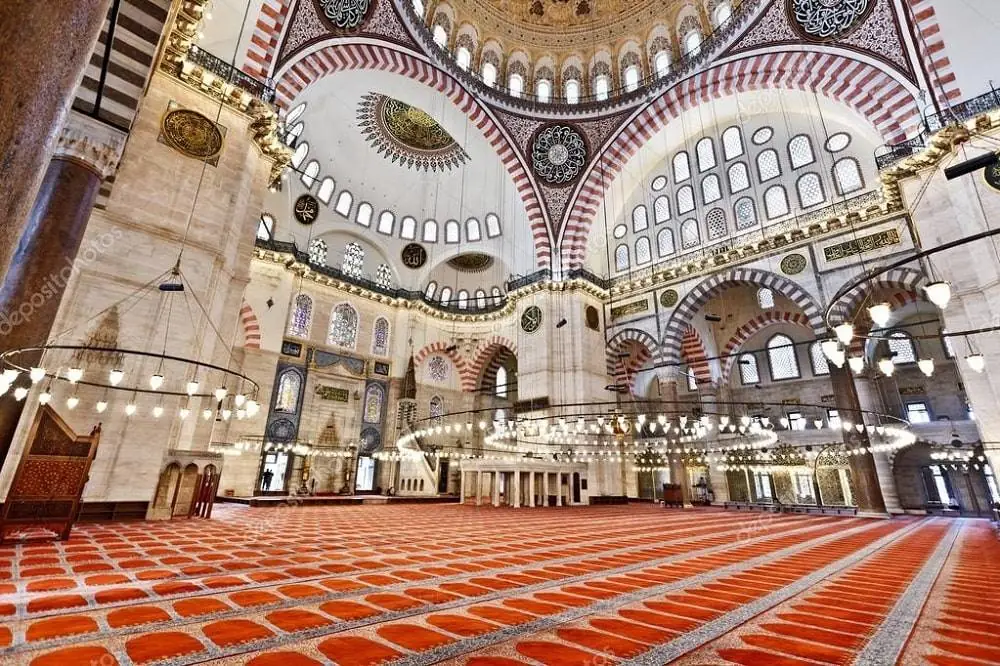The Süleymaniye Mosque is one of the biggest and most famous mosques in Turkey. The mosque is in the Süleymaniye neighbourhood of European Istanbul, and it carries the name of Sultan Suleiman the First (the Magnificent), who ordered its construction. It is adjacent to the Bosphorus. Suleymaniye Mosque in Istanbul is also a popular tourist destination, with millions of visitors flocking to witness its architecture, sections, and outstanding architectural splendor each year.
Suleymaniye Mosque Plan

The Süleymaniye Mosque in Istanbul was established using the architectural complex system, and it is purely a large building surrounded by a group of accessories and facilities, including schools and a library (the Süleymaniye Library), a hammam and a charitable restaurant to distribute food to the poor, a caravan box (Karavan Saray), a hospital, and shops. The mosque’s length is around 69 metres, while its breadth is approximately 63 metres.
The mosque was constructed using the middle dome system. The main dome stands fifty-three metres tall and has a diameter of twenty-seven metres. This dome is supported by four massive columns known as “elephant feet” due to their thickness and bulk, which are centred near the walls and have a diameter of 7.5 metres and a weight of sixty tonnes apiece.
The mosque is situated among large areas of green meadows, which give the place elegance and completeness with the mosque’s minarets and domes in a great painting that is in harmony with the blue sky, and the mosque is located among large areas of green meadows, which give the place beauty and completeness with the mosque’s minarets and domes in a beautiful painting that is in harmony with the blue sky. The Süleymaniye Mosque is distinguished by its simplicity, as opposed to the extravagant decorations and inscriptions found in many Ottoman mosques.
♦ 14 Days Turkey and Greece tour
Suleymaniye Mosque Construction

The rationale for the four minarets in the Süleymaniye Mosque is that Sultan Suleiman the Magnificent is the fourth among the Ottoman Empire’s sultans following the conquest of Istanbul, and the minarets have 10 sultans, indicating Sultan Suleiman the tenth among the Ottoman Empire’s sultans. Sultan Suleiman the Great wanted a magnificent mosque built, so he handed the project to Sinan Pasha, the most famous Islamic architect.
The mosque and the complex that surrounds it were built starting in 1550 AD and finished in 1557 AD. After Sinan prepared maps, plans, ideas, and models and placed them in the Sultan’s hands, he appreciated them, gave his permission, and unlocked the door to his locker to put them into action without spending any money. The mosque covers thirty-seven dunams in total, including the college. The architect Sinan stated:
“This mosque is my greatest achievement.”
♦ 12 Days Turkey and Jordan Tour-Istanbul Cappadocia Jordan
Suleymaniye Mosque Inside View

The mosque is genuinely an architectural masterpiece from the inside, as we see the geometric beauties and embellishments that cover the mosque’s walls when we enter through the main entrance, which is surrounded by corridors and contains the place of ablution, and when we enter the interior of the mosque, we see the geometric beauties and adornments that cover the mosque’s walls. The mosque’s mihrab, with its geometric and botanical shapes and Qur’anic paintings, is blended with Islamic design, and next to it is a marble pulpit constructed of white alabaster, whose stained-glass windows reflect the exterior daylight.
Refined Turkish tiles with motifs in seven hues, including purple-red with white and black stripes and ultra-blue, cover the inside walls of the prayer house with decorations of tulips, carnations, violets, chrysanthemums, grape leaves, apple trees, and cypress. The mosque’s interior is completely covered by the massive dome.

